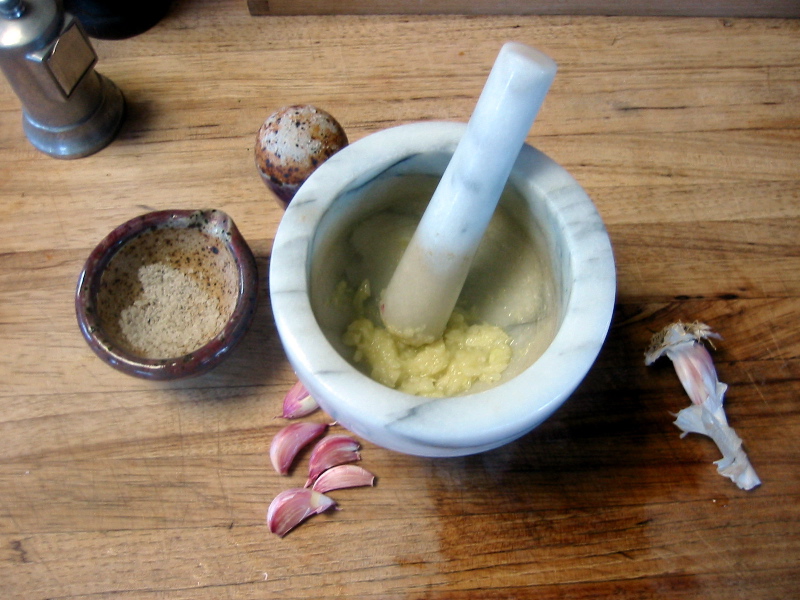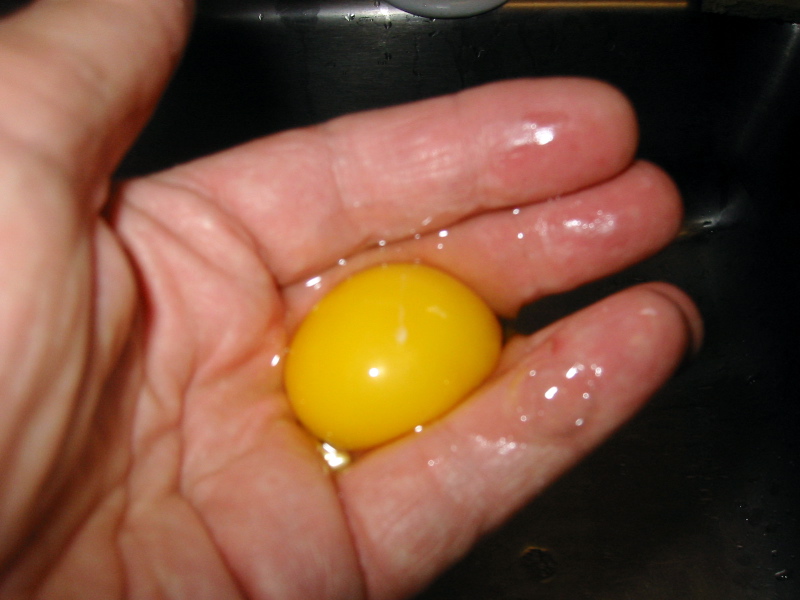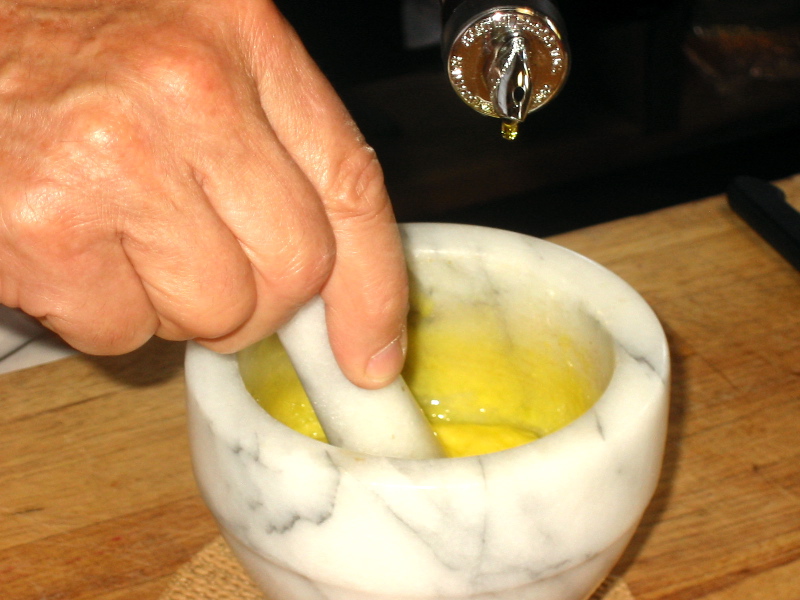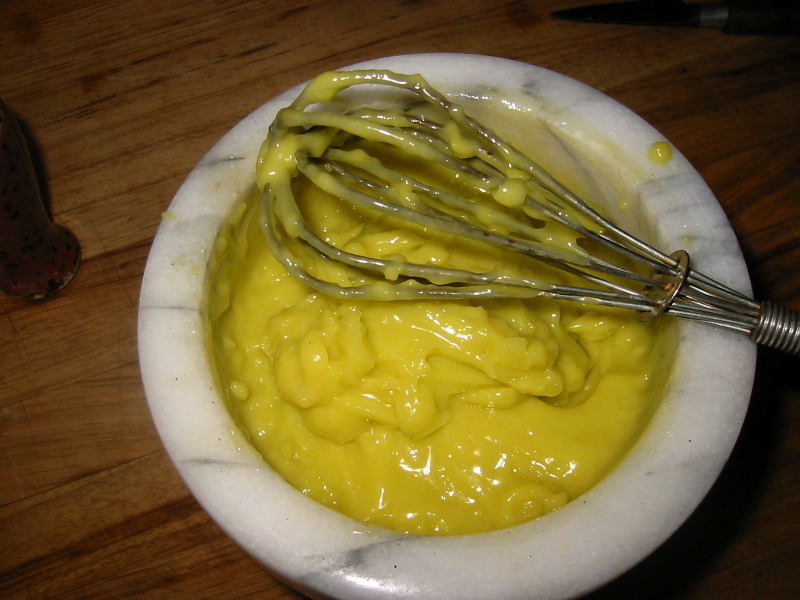Aioli
Yesterday Curt and Mary Jo came up for lunch and I made aioli:

I bruised four or five cloves of garlic with the edge of my fist and we peeled them and put them in the marble mortar, where I ground them to paste with a little bit of coarse sea salt. You do this by alternately pounding with the pestle, then grinding the pestle against the wall of the mortar.
 I usually use one egg yolk; Curt thought we should use two. Well, if we don't eat it all the leftover aioli will keep. I separate the eggs over the kitchen sink, letting the whites slip between my fingers. The yolks go into the mortar and get nicely combined with the garlic, stirring with the pestle.
I usually use one egg yolk; Curt thought we should use two. Well, if we don't eat it all the leftover aioli will keep. I separate the eggs over the kitchen sink, letting the whites slip between my fingers. The yolks go into the mortar and get nicely combined with the garlic, stirring with the pestle.
Then comes the part everyone warns you about: adding the oil. Actually it's quite simple: you stir the egg-yolks with the pestle in your right hand, gradually dripping in oil, at first drop by drop, later in a thin stream. You keep doing this until you have as much aioli as you want. It gets stiffer and stiffer: if you think it's too stiff, you can always mix in a little lemon juice or even, I'm told, water—though I've never done that myself.

That thing under the mortar is a lid-unscrewer, a sort of rubber mesh thing; it keeps the mortar from sliding around while you work. That's a drop of oil escaping the oil-dripper, top right.
It takes hardly any time to do this. You can make your aioli just before you eat; or you can make it ahead and let it stand.
I usually finish using not the pestle but a small wire whisk, to get it nice and smooth. You don't need fancy olive oil, but you do need good garlic and, I think, salt. We ate it with boiled potatoes, sliced raw tomatoes, and some delicious mahi that Curt steamed on foil on the grill, over grape-cuttings.

 I usually use one egg yolk; Curt thought we should use two. Well, if we don't eat it all the leftover aioli will keep. I separate the eggs over the kitchen sink, letting the whites slip between my fingers. The yolks go into the mortar and get nicely combined with the garlic, stirring with the pestle.
I usually use one egg yolk; Curt thought we should use two. Well, if we don't eat it all the leftover aioli will keep. I separate the eggs over the kitchen sink, letting the whites slip between my fingers. The yolks go into the mortar and get nicely combined with the garlic, stirring with the pestle.

